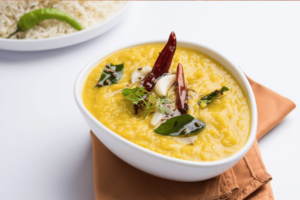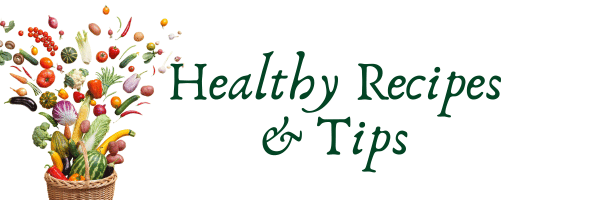Dal Recipe

Moong Dal
Moong Dal, a staple in Indian households, is a comforting and nutritious dish made from split mung beans. This dal is light on the stomach yet packed with protein, making it an excellent choice for a wholesome meal. Cooked to a creamy perfection and infused with aromatic spices, moong dal is finished with a flavorful tempering of cumin seeds, curry leaves, and dried red chilies, adding a rich depth of flavor. Whether paired with steamed rice, jeera rice, or whole wheat roti, this golden, protein-rich lentil dish is a must-try.
Rich in essential nutrients, moong dal is a powerhouse of plant-based protein, fiber, and vital minerals like iron, potassium, and magnesium. It aids digestion, supports weight management, and helps maintain stable blood sugar levels. This simple yet nourishing dish is perfect for a healthy and balanced diet. Enjoy the goodness of moong dal for lunch or dinner, and experience the warm, comforting flavors of traditional Indian cuisine.

Moong Dal
Ingredients
- 1 Cup moong dal (split yellow lentils)
- 3 Cups water
- 1/2 tbsp Turmeric powder
- Salt to taste
- For Tempering (Tadka):
- 2 tbsp oil or ghee
- 1 Cumin seeds
- 2 Dried red chilies
- Some curry leaves
- 1 tbsp Dry dal (optional, for extra flavor)
- 3 Garlic
Instructions
- Cook the Moong Dal:Rinse the soaked moong dal thoroughly in water until the water runs clear. consistency. (soak for 40 min)
- Add the moong dal, water, turmeric, and salt to a pot or pressure cooker.If using a pressure cooker: Cook for 2-3 whistles. If using a regular pot, cook for 20-25 minutes until the dal is soft and mushy.Mash the dal slightly with a spoon to get a smooth
- Prepare the Tempering (Tadka)
- Heat oil or ghee in a small pan over medium heat.
- Add cumin seeds and let them splutter.Add dried red chilies and let them turn slightly dark.
- Toss in the curry leaves and let them crisp up.Finally, add a spoonful of the cooked dal to the pan, mix well, and immediately pour this tempering over the prepared dal.Stir well, and serve hot with rice or roti.

Benefits of Lentils:
High in Plant-Based Protein: Supports muscle growth, repair, and overall health, making it ideal for vegetarians and vegans.
Rich in Dietary Fiber: It aids digestion, promotes gut health, and helps prevent constipation.
Regulates Blood Sugar Levels: A low glycemic index helps control blood sugar spikes, making it diabetic-friendly.
Boosts Heart Health: Reduces cholesterol, lowers blood pressure, and supports cardiovascular health.
Prevents Anemia: High in iron and folate, which help in red blood cell production and energy levels.
Aids in Weight Management: Low in calories and fat while keeping you full for longer, reducing cravings.
Supports Brain Function: Contains B vitamins and magnesium, which improve cognitive function and mood.
Strengthens Immunity: Rich in antioxidants and essential minerals that enhance the immune system.
Promotes Natural Detox: Helps flush out toxins and reduces inflammation in the body.
Versatile and Easy to Cook: It can be used in soups, curries, salads, and stews for a nutritious meal.

Frequently asked questions:
Is moong dal the same as lentils?
Moong dal is a type of lentil, but not all lentils are the same. Lentils come in various colors and types, and moong dal specifically refers to split mung beans without the green husk.
Is moong dal the same as yellow split peas?
No, moong dal is different from yellow split peas. While both are legumes, moong dal is softer and cooks faster, whereas yellow split peas are firmer and take longer to cook.
Is moong dal healthy?
Yes, moong dal is incredibly healthy. It is high in protein, fiber, and essential vitamins, making it a great plant-based protein source. It is also easy to digest and suitable for all ages.
What are the benefits of eating dal?
Dal is packed with nutrients such as protein, fiber, iron, and B vitamins. Regular consumption of dal supports digestion, helps manage blood sugar levels, boosts energy, and promotes overall health.
Which dal is most healthy?
Moong dal is often considered one of the healthiest dals due to its high protein content, easy digestibility, and rich nutrient profile. It is also recommended for people recovering from illness or those with digestive issues.
Is it OK to have dal daily?
Yes, eating dal daily is beneficial as it provides essential nutrients, protein, and fiber. However, moderation is key, and it should be balanced with other food groups for a well-rounded diet.
What are the disadvantages of dal?
While dal is nutritious, excessive consumption may cause bloating or gas in some people. Some dal, like urad dal or chana dal, can be heavier on digestion, so portion control is important.
